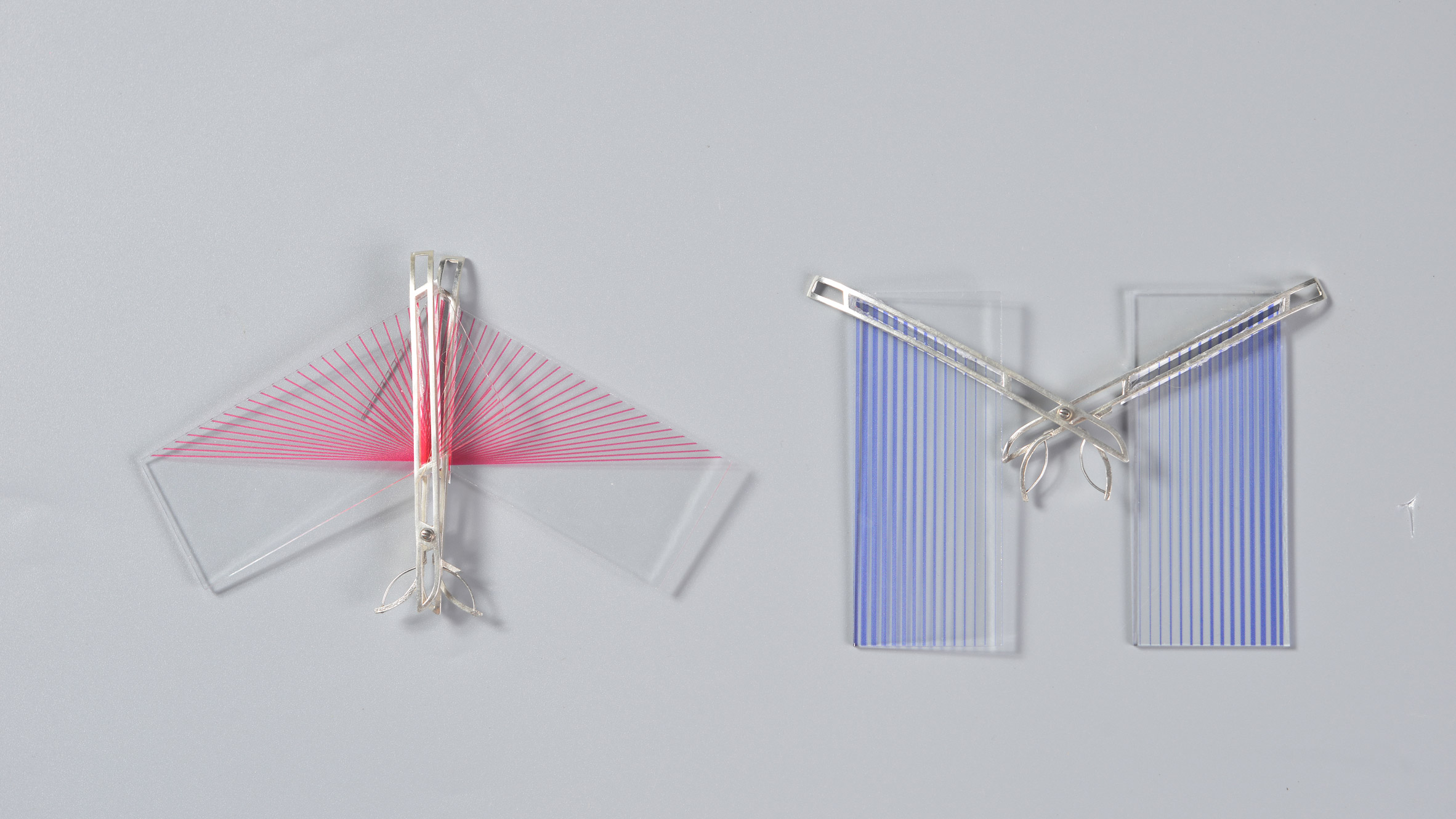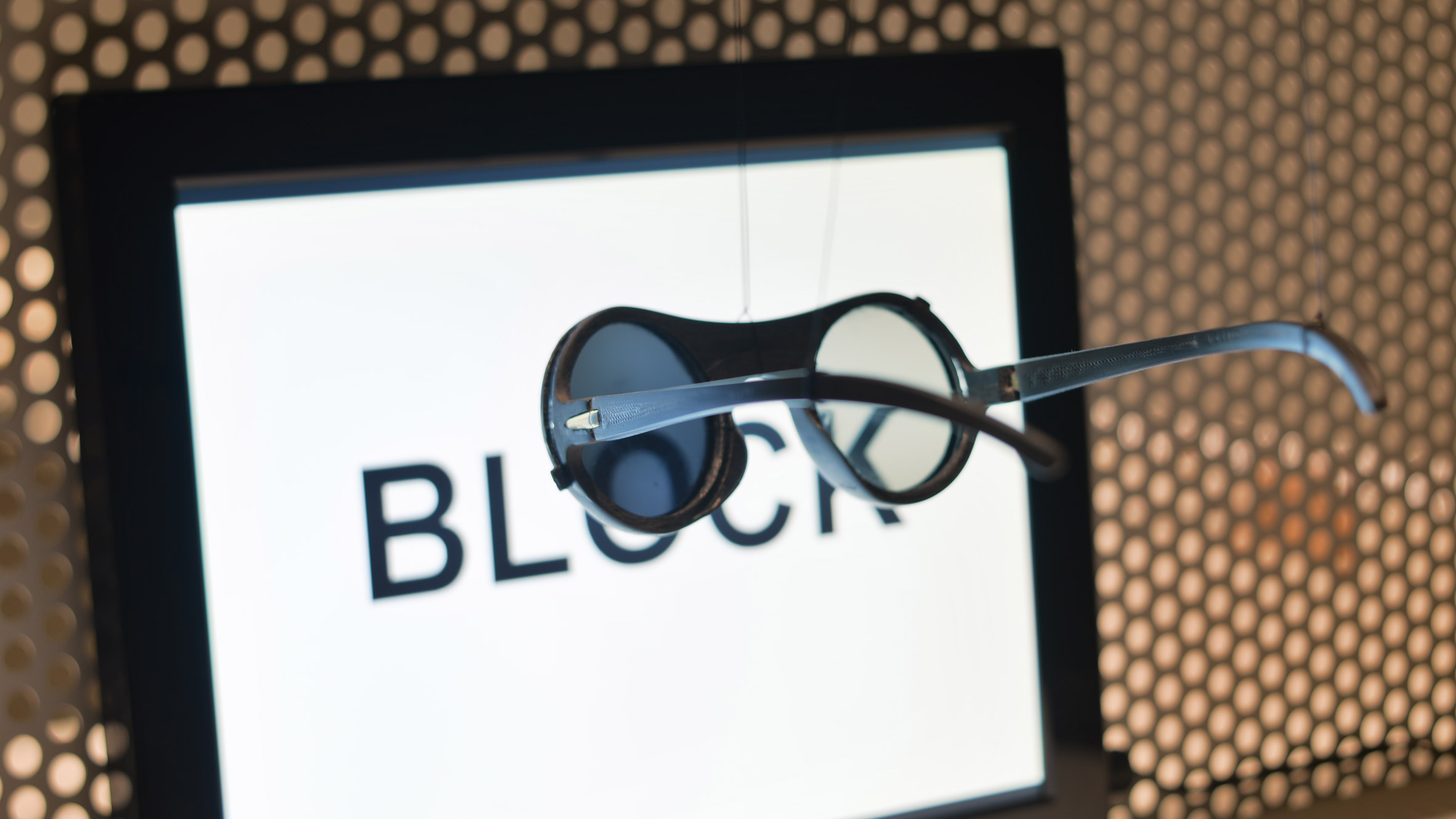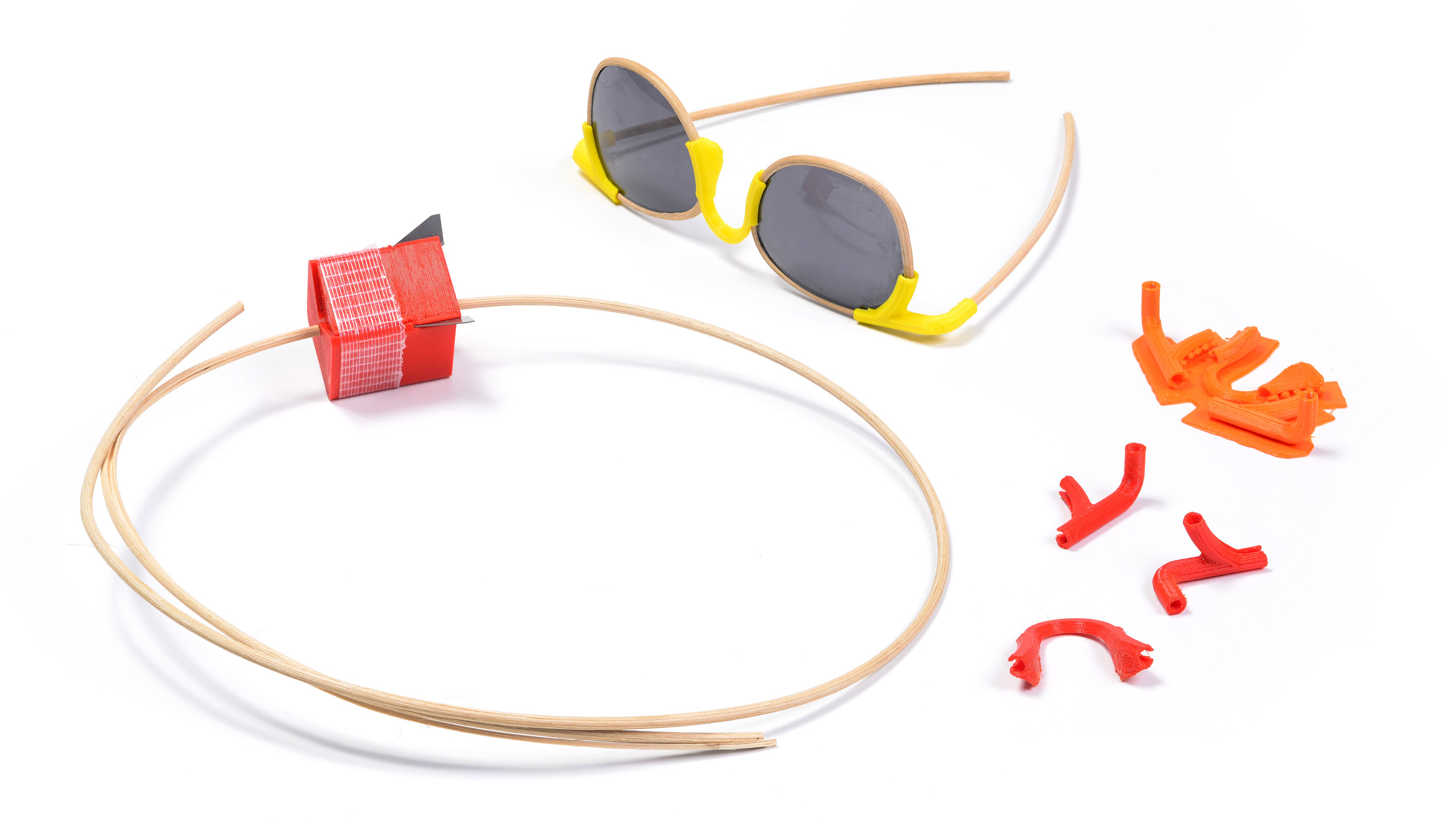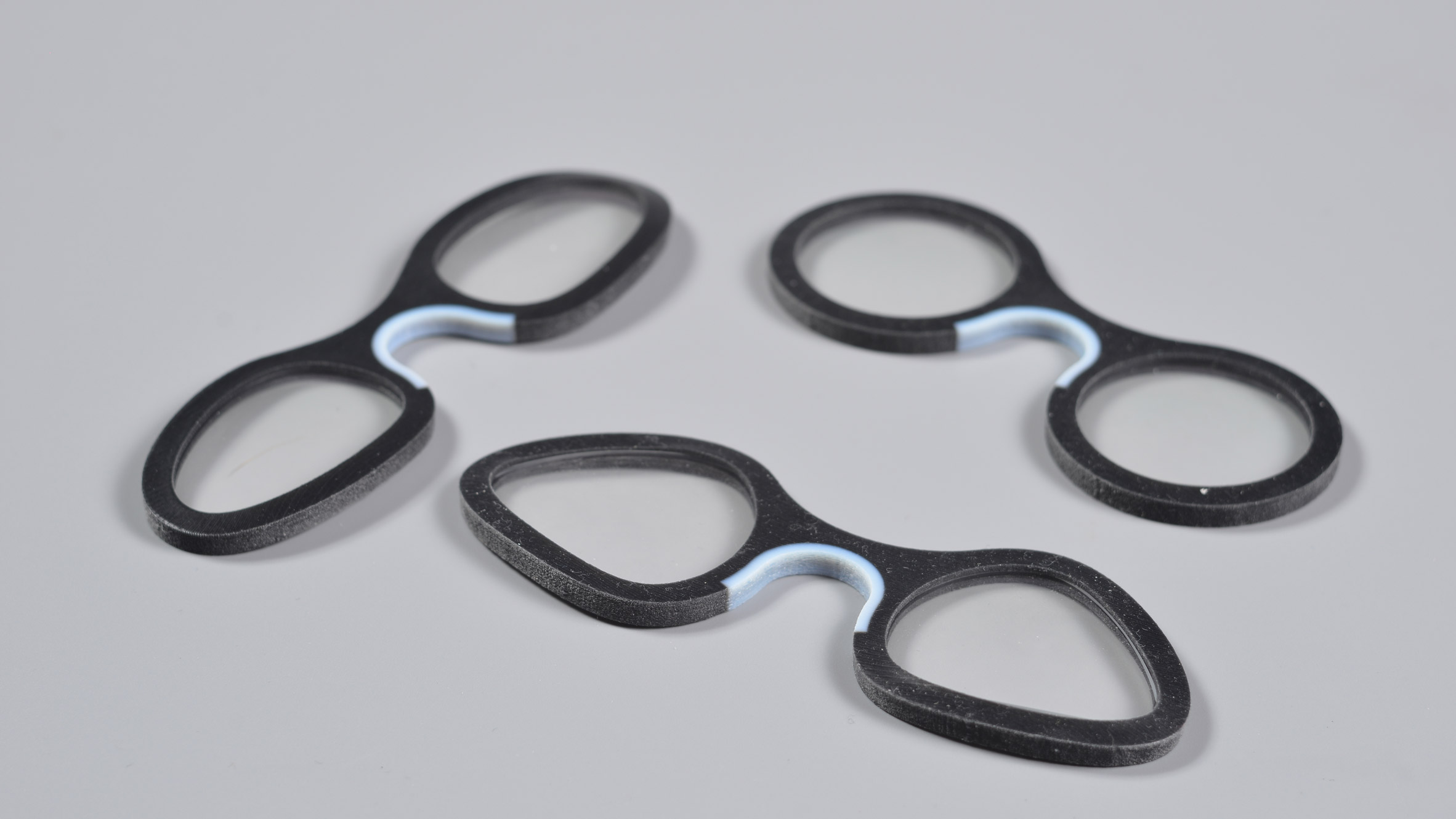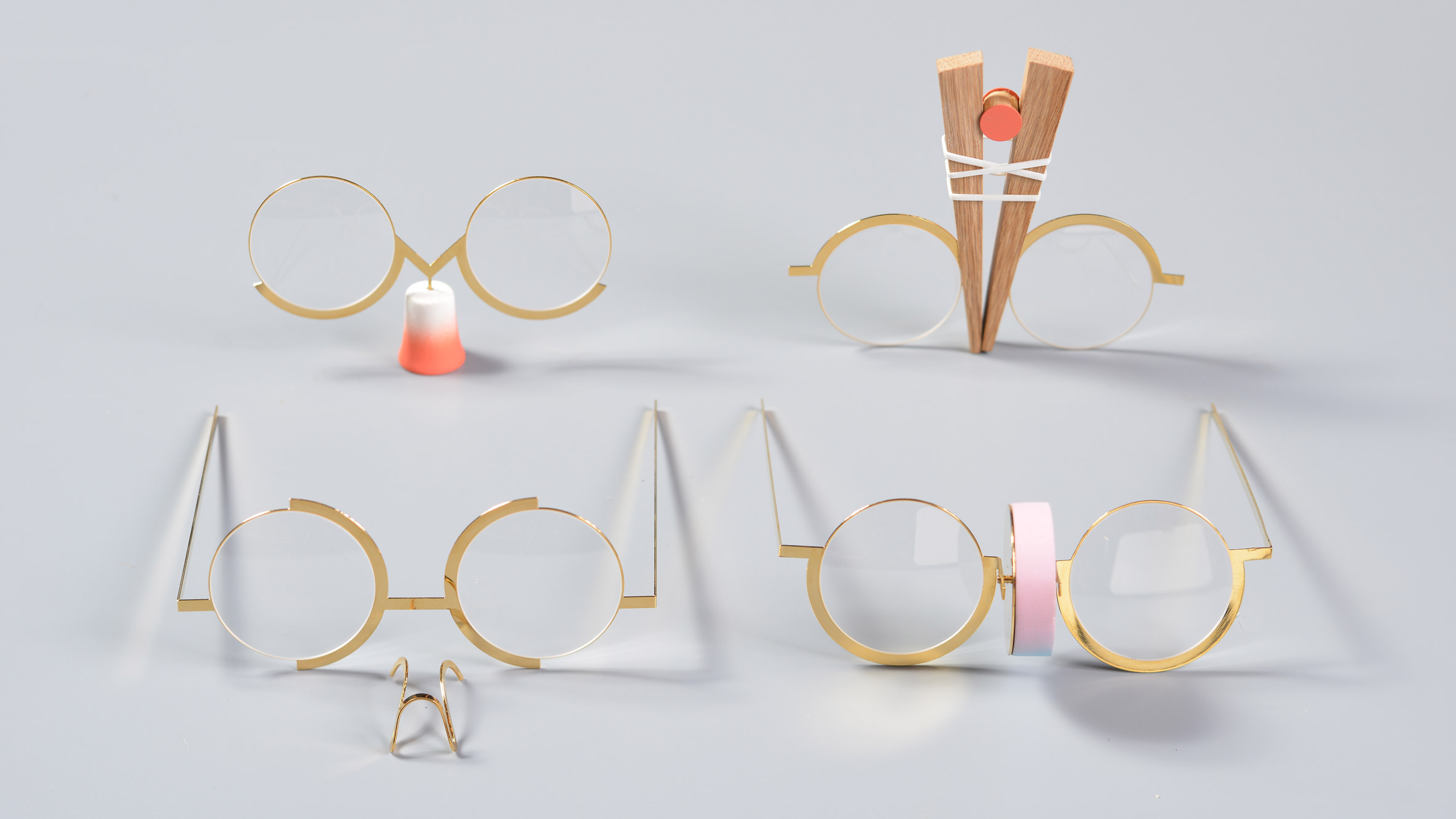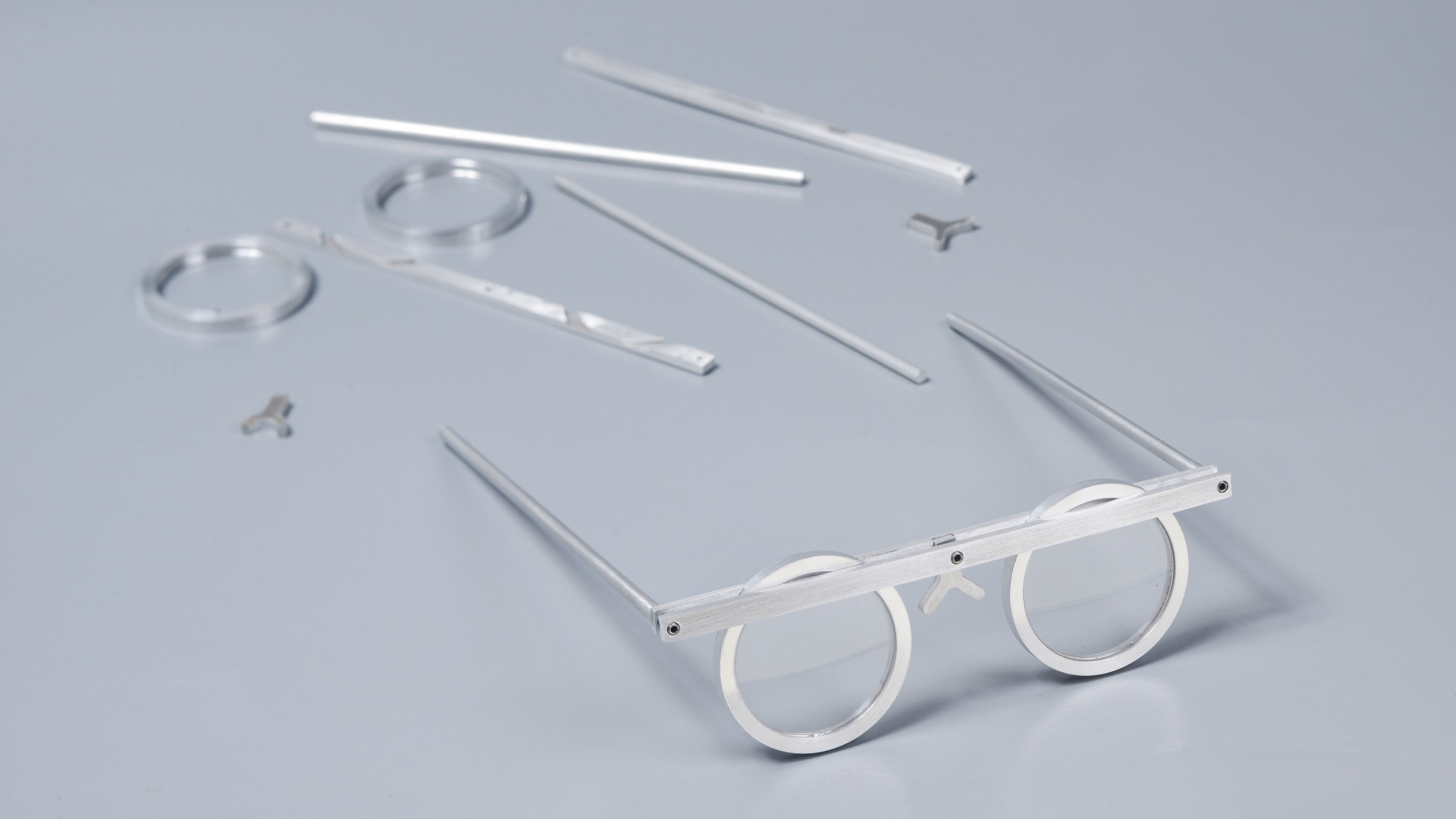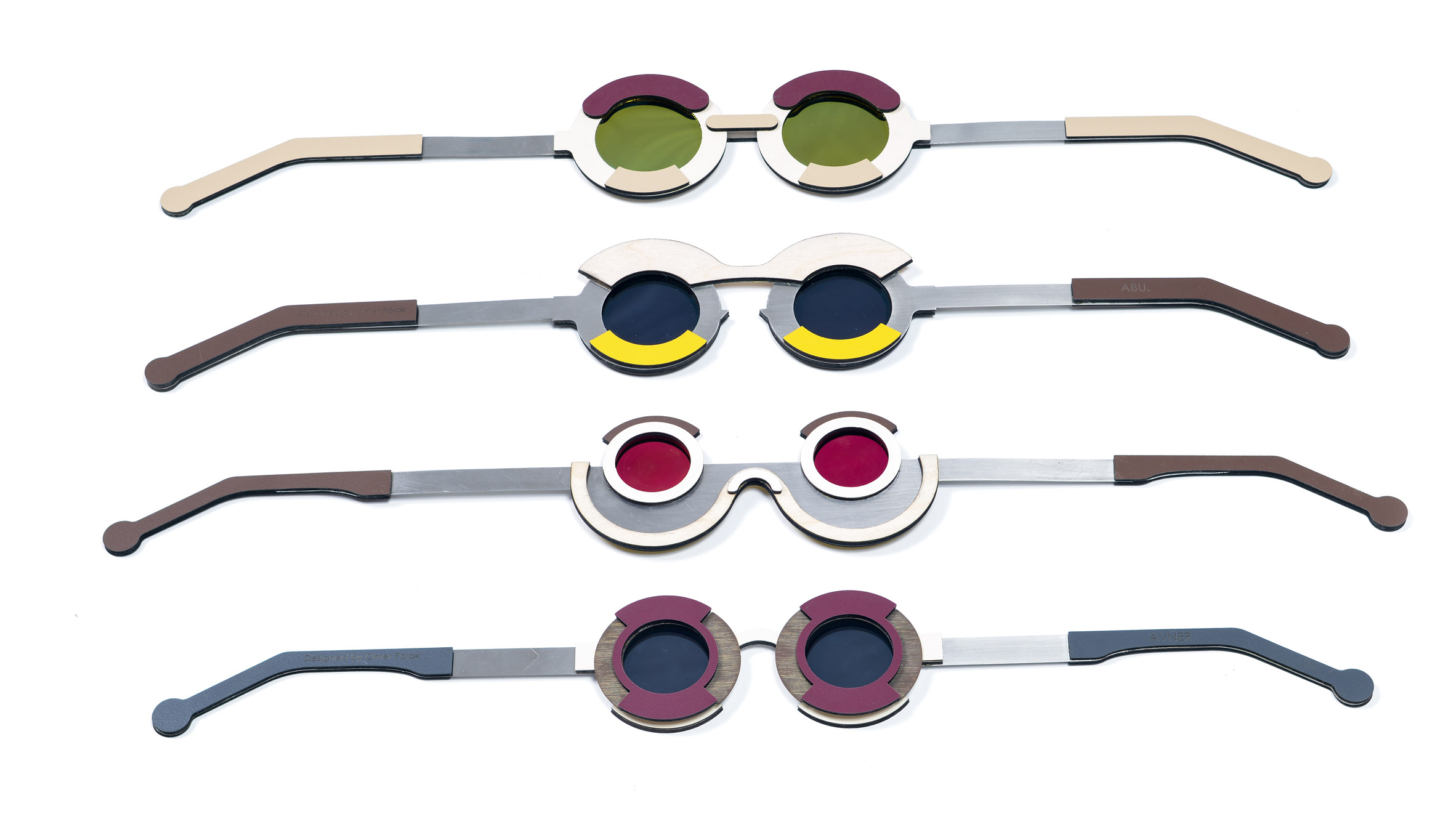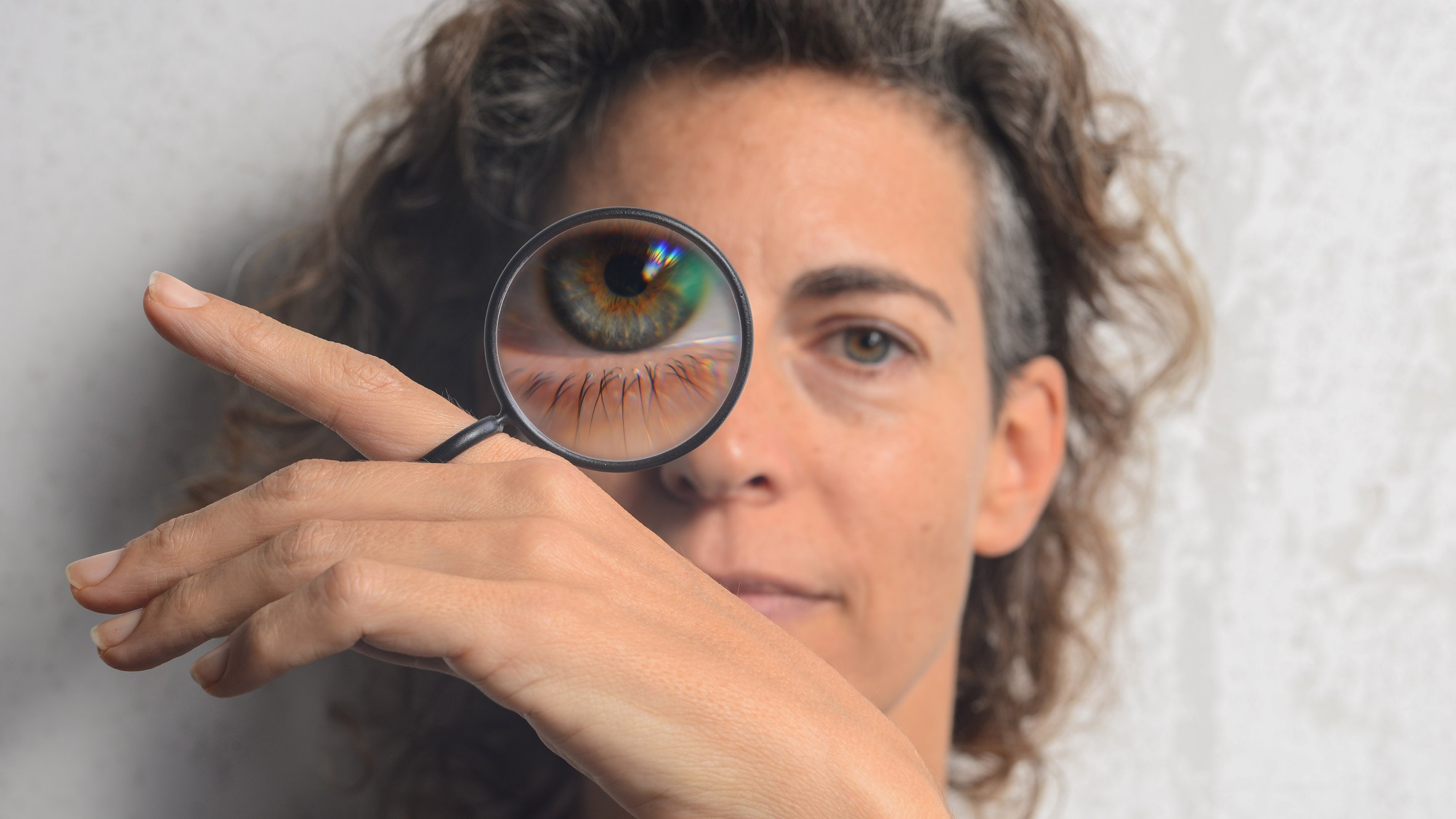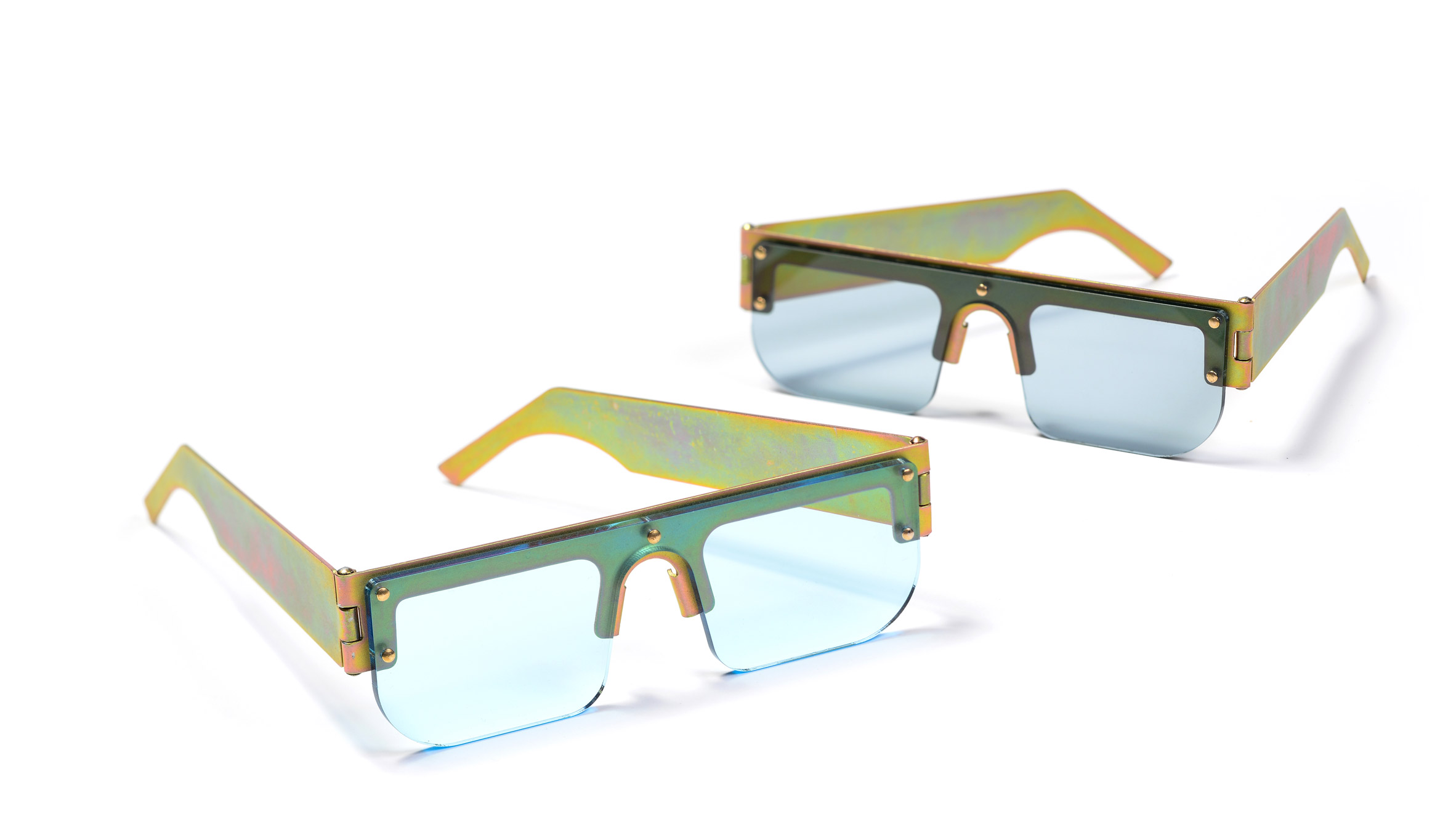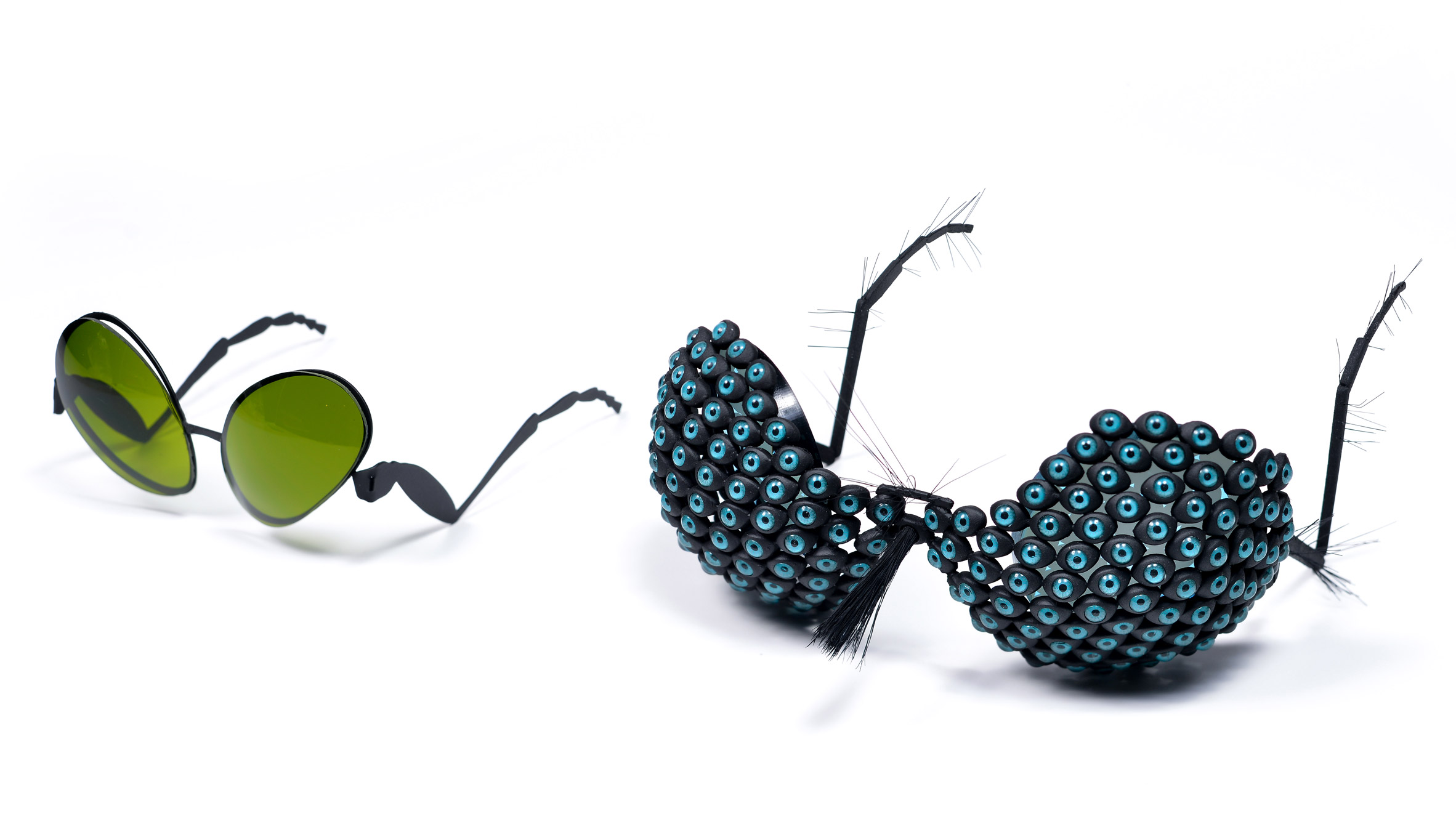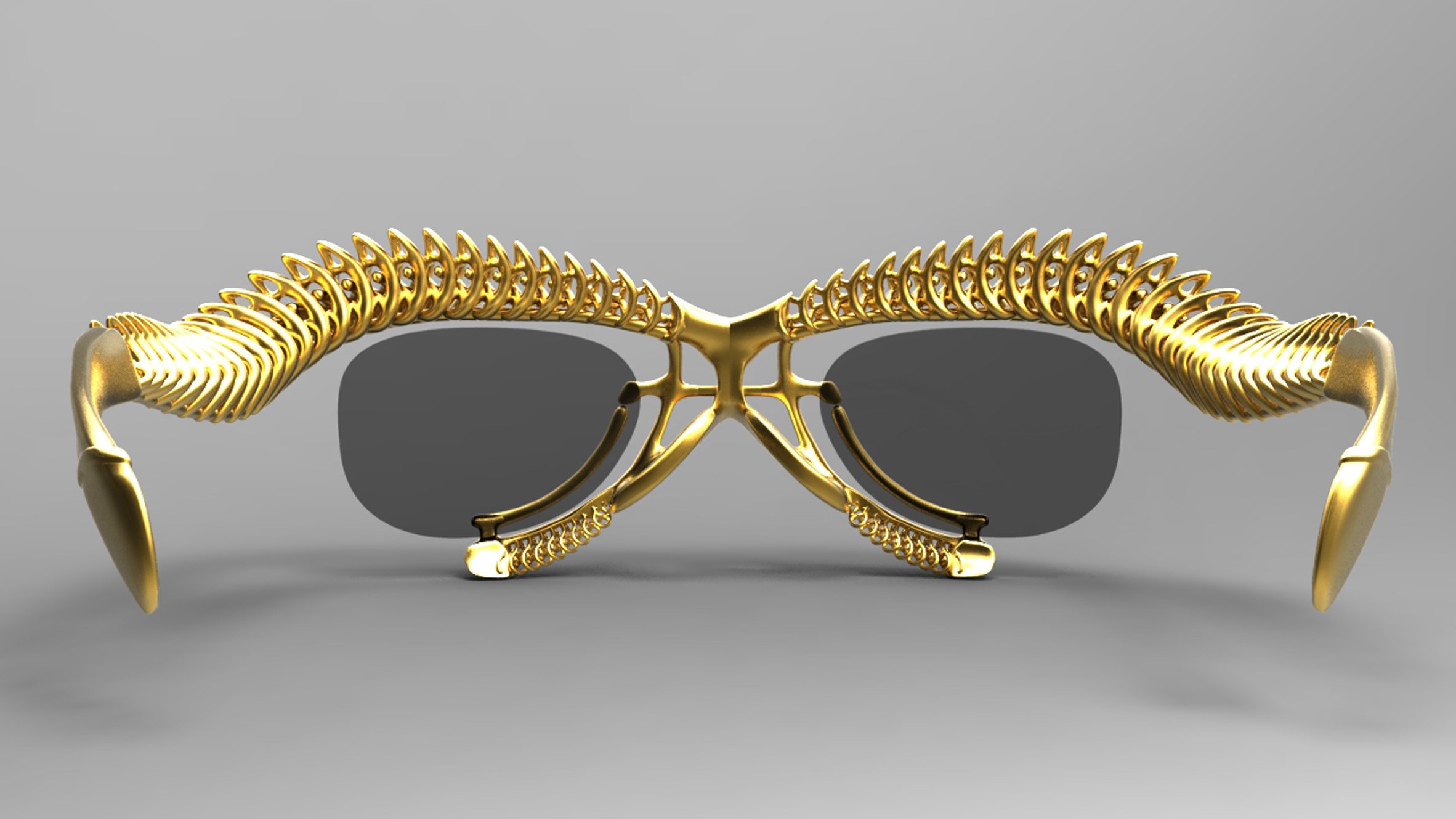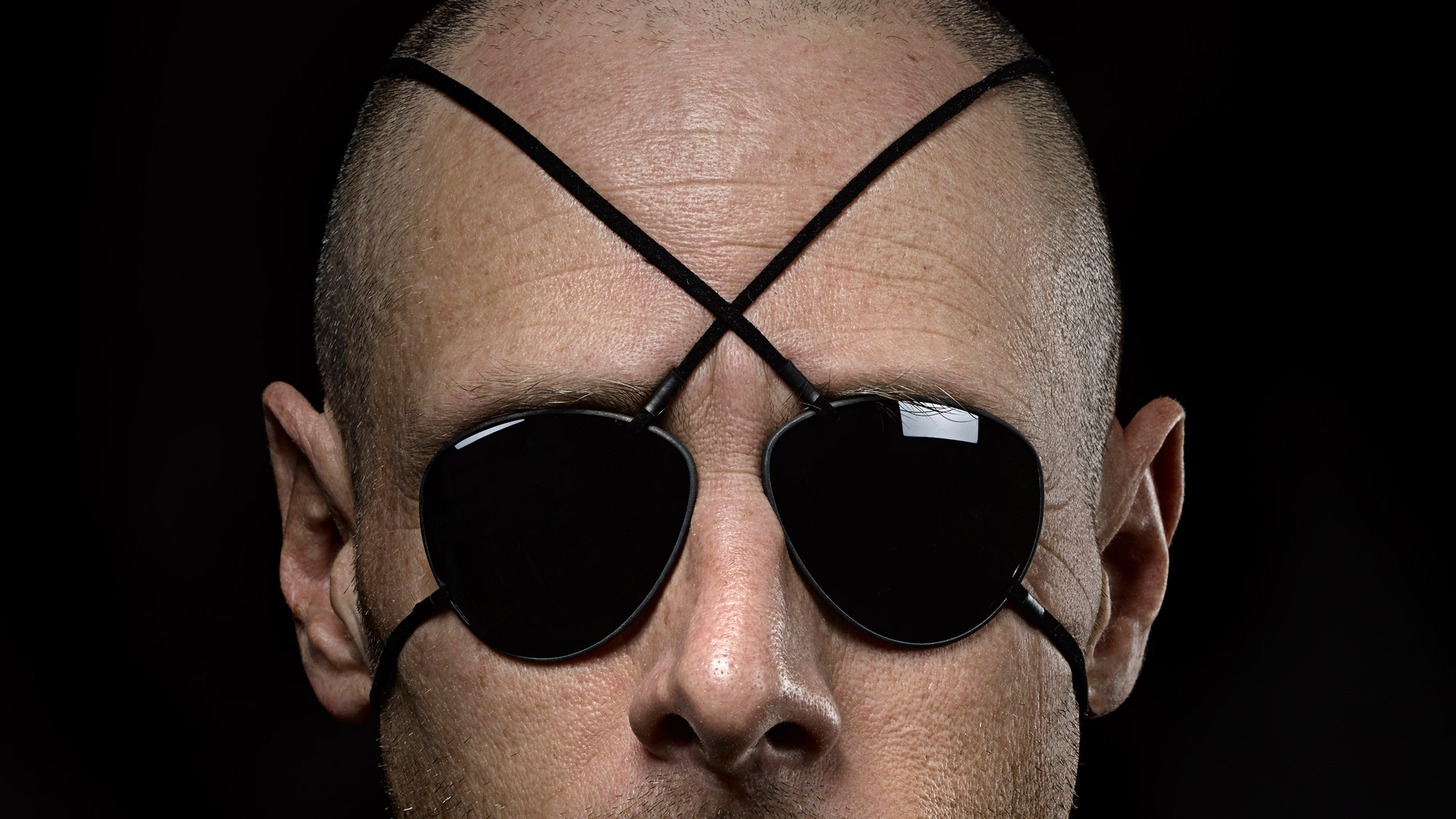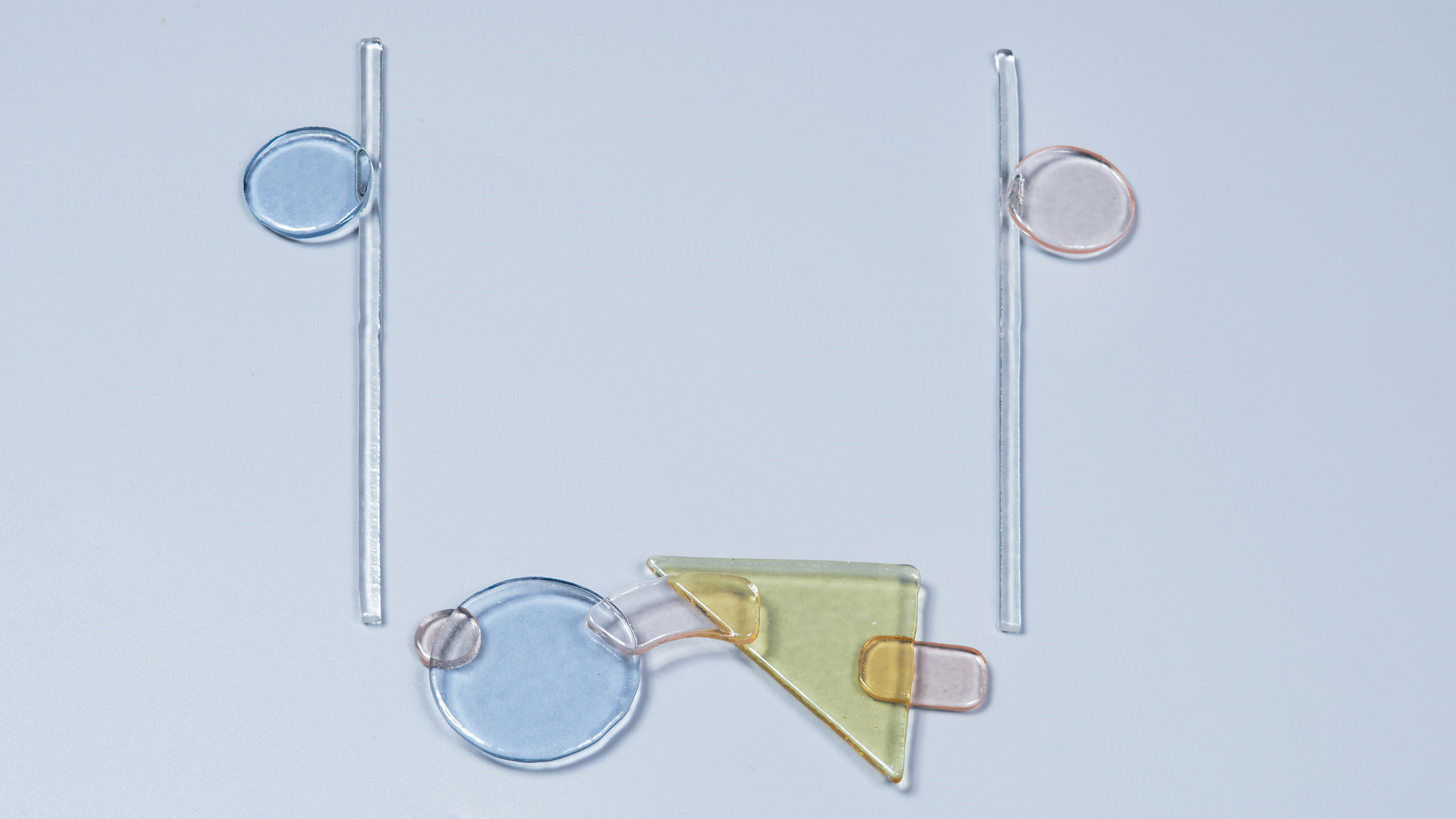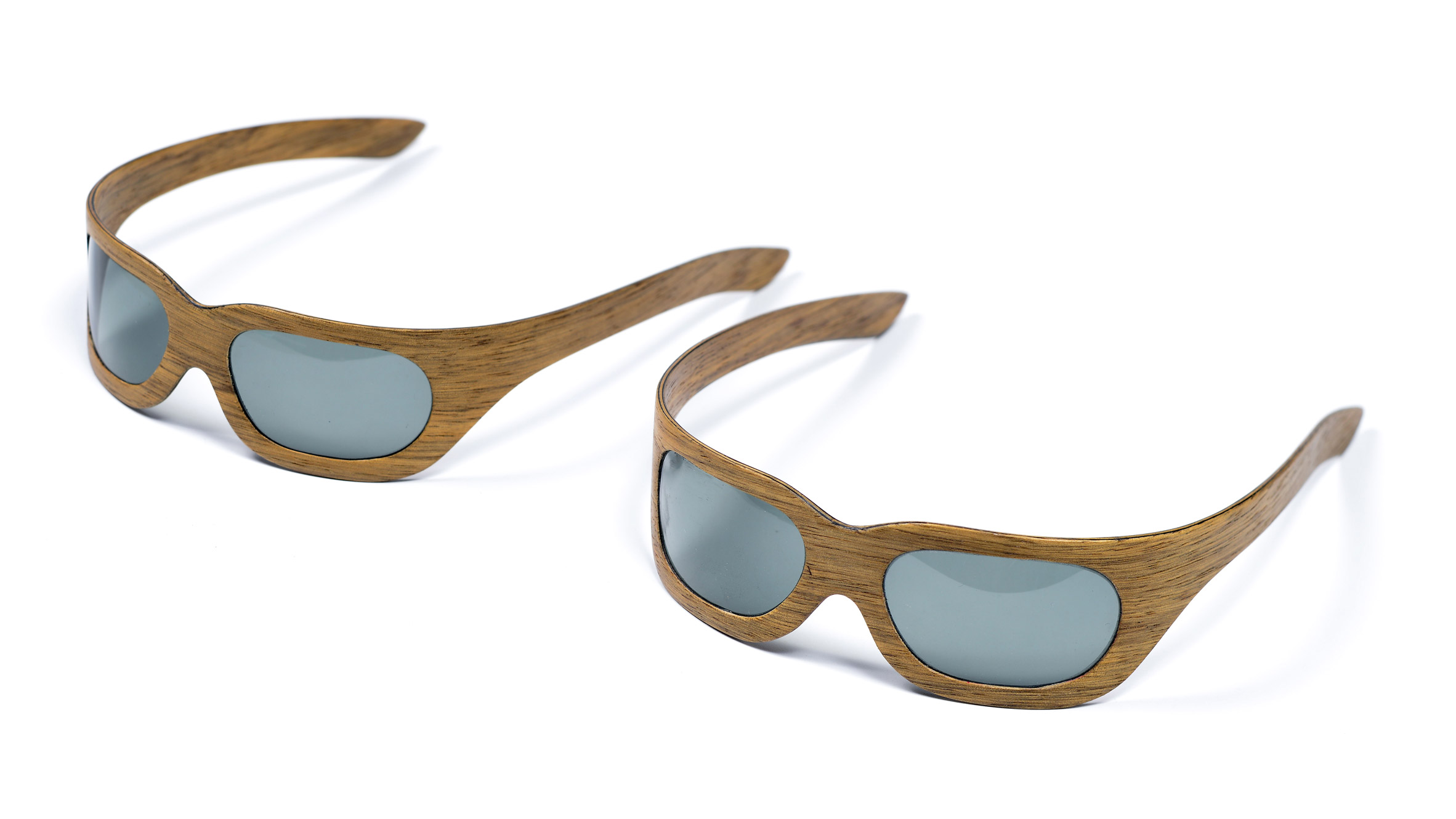Highly personalised frames, glasses that block out screens and lenses that put a filter on the world are among the eyewear concepts proposed by contemporary Israeli designers for the Design Museum Holon.
The museum commissioned more than 40 designers from a range of fields to contribute to Overview, an exhibition about the past and future of eyewear.
Work from industrial designer Asaf Weinbroom and architects Baranowitz + Kronenberg feature among the designs, which respond to the prompt "what are eyeglasses?" with a range of different forms, materials, processes and functions.
Their concepts suggest that eyewear design could go in a number of directions. Corrective eyewear of the past has already taken diverse forms – the exhibition displays some 400 examples – so as a fashion item and potential wearable technology, it is likely to continue to evolve.
"We tend to forget that the initial purpose of eyeglasses was to correct a flaw, and eyeglasses do not conceal that flaw, but actually emphasise it by means of design," said Overview exhibition curator and Holon's acting chief curator Maya Dvash.
Here are 15 concepts for the future of eyewear on display in the Overview exhibition, along with the designer's statements:
Block: Glasses to See Less by Tal Erez
"The objects around us are increasingly undergoing digitisation. It seems that wherever we turn our eyes, screens give us their wicked smiles. Block glasses enable us to see less. By turning the lenses we can switch off the screens around us and hope, at least for a moment, to see the real world. Block are open-code glasses and are adapted for manufacture and adjustments on a home 3D printer, with lenses that can be purchased from any optician."
Personalisation in the Age of Experience by Anuk Yosebashvili, Yaron Shmerkin with Immersive Customization
"This exhibit expresses personalisation in its profoundest meaning. Our personality is composed of many, varied, and at times even extreme layers. We are exposed to an abundance of visual offerings that heighten the desire to externalise parts of our diverse personality. Technology and media are developing rapidly, enabling fast and instant communication, and thus the designer, the computer and the client become full partners in the design process."
Glasses by Rona Zinger
"Many people want eyeglasses merely as a fashion accessory even if their eyesight does not need to be corrected. This project presents eyeglasses created from non-convex glass sheets that do not improve eyesight. Eyesight, in addition to not being sharpened, is actually blurred and expands the boundaries of the interplay between the face and the screen in front of it. The textures on the glass surfaces serve as filters through which the user sees and is seen, and thus the screen becomes a mask as well."
Dayandayan by Dov Ganchrow
"The monocle configuration is a design solution for a single eye. When both eyes need corrective lenses we use the glasses configuration. The Dayandayan is a single-eye design solution put to use twice, ignoring the historic move to glasses. This iconic product befits a superhero, and in local-Israel context references Moshe Dayan."
Flysses by Ariel Lavian
"The characteristics of eyeglasses, like the shape and size of the frame, the materials or the tint of the lenses, construct a cultural perception and constitute signposts that can attest to human traits. This project addresses eyeglasses as a tool for characterising and shaping identity by creating a hybrid of a mask and a piece of jewellery. The morphological inspiration for the project is drawn from flies, which possess a unique eye structure called 'compound eye'."
Carbonwood Glasses by Ezri Tarazi
"These sunglasses are made in a process of layering thin strips of tree bark fused with carbon fibre. In 2005, when the glasses were designed, the objective was to find a way of incorporating wood into a product with high rigidity requirements. The structure of the lamination outlined a complete configuration and, forgoing the accepted folding hinges, enabled a circular flow from the glasses to the sides of the head. The choice to design sunglasses is intended to reinforce their secondary use as a hair band."
Glasses by Hilla Shamia Studio
"This project focuses on the eyeglass lenses, which were originally made from glass, and presents a complete object manufactured from them. Thus, a practical material is transformed into an aesthetic material, and its transparency enables playfulness in the design process. Layers of transparencies, colours, forms and patterns are fused together in the manufacturing process, and are reminiscent of 'rose-colored glasses' through which the world appears more positive. The final object is a hybrid of a medical product in which the functional material has taken over the entire object, and a cheerful, carefree fashion accessory."
Open Glasses by Baranowitz Kronenberg Architecture
"Open Glasses is an interactive app that combines consumer culture and material, and enables users to choose and decide with which lens to adorn themselves each day. The app presents a selection of lenses of different shapes, cuts, edgings, tints and polishes meticulously arranged in a box, with a silicone eye patch onto which each and every one of them can be mounted. The new reality is revealed before our eyes and provides us with an alternative appearance, perception and representation."
Wicker Shades by Shira Keret and Itay Laniado
"Underlying this project is formal and material research engaging in the influence of the raw material on the object's character, form and cultural contexts. Wicker is an organic material traditionally associated with the world of crafts, but which has an industrial manufacturing method and consistency in its dimensions. This technical datum makes it possible to plan standard connectors that enable diverse connection possibilities, and thus create a range of forms that rely on the material's characteristics and boundaries."
On the Tip of Your Nose by Dana Benshalom
"This series of eyeglasses examines the complex relationship between eyeglasses and the nose. It focuses on the finger sliding up the nose to reposition the eyeglasses that repeatedly insist on sliding down – the typical hand movement, the simple gesture that distinguishes people who wear glasses. The four pairs of glasses presented here create an imaginary continuum – between those that 'stay put' and those that 'slide down', or between abolishing and preserving the movement – by means of unrealistic aids and solutions borrowed from different conceptual worlds."
Glasses by Asaf Weinbroom
"These eyeglasses are built on connectors and mechanisms, and based on the notion of clamping. All the parts are cold-connected, so that unscrewing the temples releases all the parts. This connector enables each and every part to be chosen separately, and the final assembly to be according to each person's individual taste."
The 3rd Eye by Ototo
"This project engages in what is invisible to the human eye and the attributes ascribed to the concept of the third eye, which can see clearly even when the vision is vague, and can find the way even when there is a sense that it is lost. The single lens enables personal reflection, and with it perhaps also the ability to believe."
Florentin 001 by Omer Polak
"The studio is located in Florentin neighbourhood, Tel Aviv, and is surrounded by carpentry workshops that manufacture tables and kitchens, usually made from Formica-covered plywood. The eyeglasses reference the manufacturing technologies associated with these materials. Like an old neighbourhood, comprising layers upon layers accumulated over the years into a unique fabric, the eyeglasses are made from layers upon layers manufactured by the local craftsmen in the neighbourhood. Featuring physiognomic characteristics, each pair of glasses represents a different character in the neighbourhood."
Reddish by Idan Friedman and Naama Steinbock
"These eyeglasses are grounded in available technologies lacking a connection with fashion. They emphasise the folding point, which becomes an integral part of the structure, and present material honesty stemming from simple and exposed solutions. It is by means of a technical approach to the object that they attempt to propose an alternative point of view to a field that has already seen everything, and show that even turning your back on fashion is a fashion statement.
Touch Lenses by Tal Gur
Conceived as a piece of jewellery that maintains contact with multiple parts of the body, first and foremost with parts of the face, this project combines rings and optical lenses, and by means of design addresses the jewellery aspects of eyeglasses and the new body movements that are likely to emerge with the new object.
Photography is by Shay Ben Efraim.

